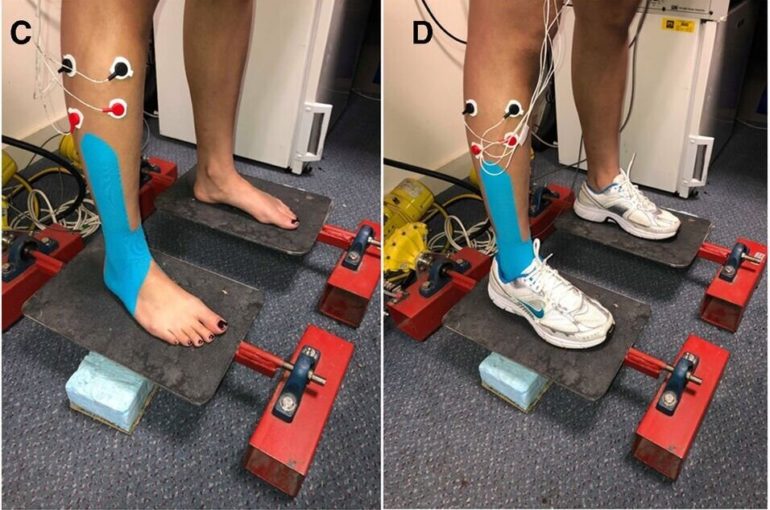It has been adopted by the likes of Cristiano Ronaldo, Tiger Woods and Andy Murray as a colorful way to help them play through pain, but research from the University of Dundee has found kinesiology tape to be ineffective at protecting athletes ankles.
A study conducted by the University’s Institute of Motion Analysis and Research (IMAR) found that the colorful tape failed to support ankles and help prevent injuries such as sprains.
The findings, published in the journal BMJ Open Sport & Exercise Medicine, suggest that kinesiology tape has no effect on ankle stability after the muscle activity of 27 individuals was analyzed across four test conditions.
“Very few studies have been conducted on kinesiology tape, and this was the first to have looked at it in combination with shoes,” said Zack Slevin, author of the study.
“Many sports people are plagued by lateral ankle sprains and use ankle supports, tapes and braces to mitigate these, despite it having been highlighted to have a negative impact on athletic performance.
“Kinesiology tape has become increasingly popular because of its increased flexibility, yet our research found it made no discernible difference in improving ankle stability, regardless as to whether our test subjects did or did not wear shoes.”
Kinesiology tape was developed in the 1970s. The product, often sold in bright colors, boomed in popularity around the time of the 2012 London Olympics, and is commonly sported by top athletes looking to support muscles in training and competition.
Its increased flexibility means it has become an increasingly popular alternative to traditional athletic tape, which research has shown can reduce the incidence of sprain recurrence, albeit at cost of athletic performance.
The IMAR study placed the feet of subjects on tilting platforms both with and without shoes on and wearing and not wearing kinesiology tape, providing four sets of readings per participant. The tape was applied in accordance with the manufacturer’s instructions, with the platforms moved in random patterns to prevent the subject from pre-empting its movements.
Measurements of the peroneus longus and tibialis anterior, the main stabilizing muscles in the ankle, were taken during subjects’ sessions on the platform. The analysis showed no significant difference in the results between taped and non-taped ankles. This indicated that the kinesiology tape did not alter the activity of these stabilizing muscles in any way that may result in improved ankle stability.
While manufacturers state that kinesiology tape is not clinically proven to assist all kinds of injury, Zack added, “As a rugby player I’ve seen kinesiology tape become increasingly popular and because of this I was keen to see if it had any real benefits.
“More research does need to be done, and there are claims that it may relieve muscle tension and pain, among other things. However, our study did not focus on this and for some athletes it may provide more of a mental benefit than anything physical.”
More information:
Zack M Slevin et al. Immediate effect of kinesiology tape on ankle stability, BMJ Open Sport & Exercise Medicine (2020). DOI: 10.1136/bmjsem-2019-000604
Provided by
University of Dundee
Citation:
Sports stars’ kinesiology tape injury treatment makes ‘no difference’ (2021, April 23)
retrieved 25 April 2021
from https://medicalxpress.com/news/2021-04-sports-stars-kinesiology-tape-injury.html
This document is subject to copyright. Apart from any fair dealing for the purpose of private study or research, no
part may be reproduced without the written permission. The content is provided for information purposes only.



